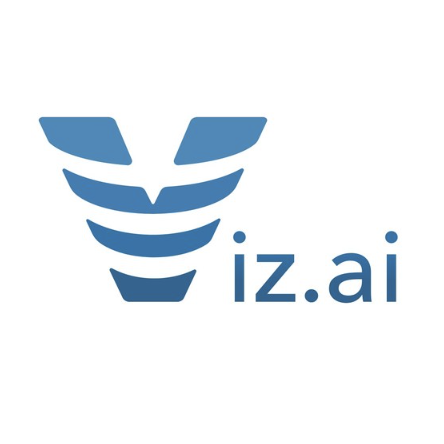Providing child care assistance to your employees can be important for attracting and retaining top talent.
For startups, offering a child care stipend or program goes beyond just financial support; it signals that your company values work-life balance and is willing to invest in employee well-being.

However, structuring these benefits properly, while navigating tax implications and compliance requirements, is critical for both employers and employees.

As a startup accounting firm, we can’t provide HR or payroll advice, but we can guide you on the general tax and financial considerations of creating a child care assistance policy.
Pre-tax vs. post-tax child care assistance
If your startup is considering child care assistance, there are two main ways to structure the benefit. You can create a pre-tax program, through a qualified Dependent Care Assistance Program (DCAP) or a Flexible Spending Account (FSA).
Or you can create a post-tax program, using a stipend or reimbursement program. Here’s a quick overview of both methods and how they impact the employees and the company.
- Pre-tax (DCAP or FSA):
- Employee benefits. Employees save on taxes by setting aside pre-tax dollars, reducing their taxable income.
- Employer benefits. Reduced taxable income also reduces employer FICA contributions.
- Compliance requirements. Pre-tax programs must follow IRS guidelines and pass nondiscrimination testing to make sure there’s fair access for all your employees.
- Post-tax:
- Employee impact. With post-tax assistance, the stipend or benefit is taxable to the employee. It provides financial support but doesn’t reduce their taxable income.
- Employer flexibility. Since post-tax benefits don’t come with the same IRS restrictions, you avoid nondiscrimination testing, but employers also miss out on payroll tax savings.
For startups aiming for simplicity, post-tax assistance offers greater flexibility but fewer tax advantages. However, pre-tax programs can provide both employees and employers with tax savings, making them a more cost-effective option. You will, however, have to document your compliance.
Qualified Dependent Care Assistance Program (DCAP)
One of the most common ways startups can support employees with child care expenses is through a Dependent Care Assistance Program (DCAP). This allows employees to contribute pre-tax dollars toward qualifying child care costs. Here’s how it works:
- Contribution limits. Employees can set aside up to $5,000 annually from their taxable income to cover child care expenses. This helps reduce their overall tax burden, making child care more affordable.
- Eligible expenses. Costs related to day care, babysitting services, and after-school programs for children under 13 (or other dependents who need care) qualify under DCAP.
- Employee tax filing. Employees must report these expenses on IRS Form 2441 to ensure compliance.
Benefits for employees. Pre-tax contributions reduce employees’ taxable income, effectively lowering their federal income taxes, Social Security (FICA), and Medicare taxes.
Benefits for employers. By offering a DCAP, employers also save on FICA contributions, as the reduced employee taxable income means lower payroll taxes. However, startups must make sure that DCAP benefits comply with IRS nondiscrimination rules, meaning all employees – regardless of pay – should have equal access to the program.
On-site or employer-subsidized child care
For startups with the resources, offering on-site child care or subsidizing nearby child care centers can enhance employee retention and productivity. Under IRS Section 45F, companies offering on-site child care may receive a tax credit of up to 25% of expenses, capped at $150,000 annually.
Benefits for employees. On-site care is a convenient option for working parents, helping them manage their workday more effectively.
Benefits for employers. Beyond tax credits, providing child care can improve employee satisfaction, reduce absenteeism, and serve as a strong recruiting tool.
However, setting up on-site care may be too costly for many early-stage startups. There are a few negatives to consider before establishing an on-site child care center for your employees. Your startup’s childcare program will need to comply with local licensing laws, and your company will need increased liability protection for potential injuries. You’ll also need to establish a location for the program, which can also mean complying with local zoning and childcare laws. And you’ll need to hire child care providers.
For these reasons, subsidizing third-party care providers is often a more practical approach. Your startup can look for child care facilities in the immediate area, assume some or all of the cost for your employees, or work with the third-party provider to offer a discount to employees.
Please note that if you make recommendations to your employees you could face liability if there are problems. Consult your legal counsel if you’re considering subsidizing a third-party childcare provider.
Which option is best?
The decision between offering pre-tax or post-tax child care assistance depends on your company’s goals and resources.
- Pre-tax programs (like DCAP). These can be best for companies looking to offer structured, tax-efficient benefits that appeal to employees. These programs can reduce tax burdens for both employees and employers, though they require more compliance oversight.
- Post-tax programs. More flexible and easier to administer, especially for smaller teams, but less tax-efficient. These are a good option if you’re focused on recruitment and retention without needing the tax benefits.
Coordinating with other tax credits
Employees who participate in a DCAP can still claim the Child and Dependent Care Tax Credit, though their DCAP contributions will reduce the amount they can claim through this credit. Employees will need to coordinate these benefits carefully to maximize their tax savings.
As a startup founder, it’s also crucial to comply with IRS nondiscrimination testing requirements if you opt for a pre-tax program.
Next steps: Consult the experts
Creating a child care assistance policy involves navigating both tax and legal guidelines, start by talking to your payroll provider, your human resources consultant, and your legal counsel before implementing any program. They can help make sure that your policies comply with the relevant IRS regulations and reporting requirements.
While child care assistance might seem complex, offering this benefit can help your startup appeal to top talent, since employees increasingly value work-life balance and family-oriented benefits. By understanding the tax implications and choosing the right structure, you can provide meaningful support to your team without sacrificing financial efficiency.








